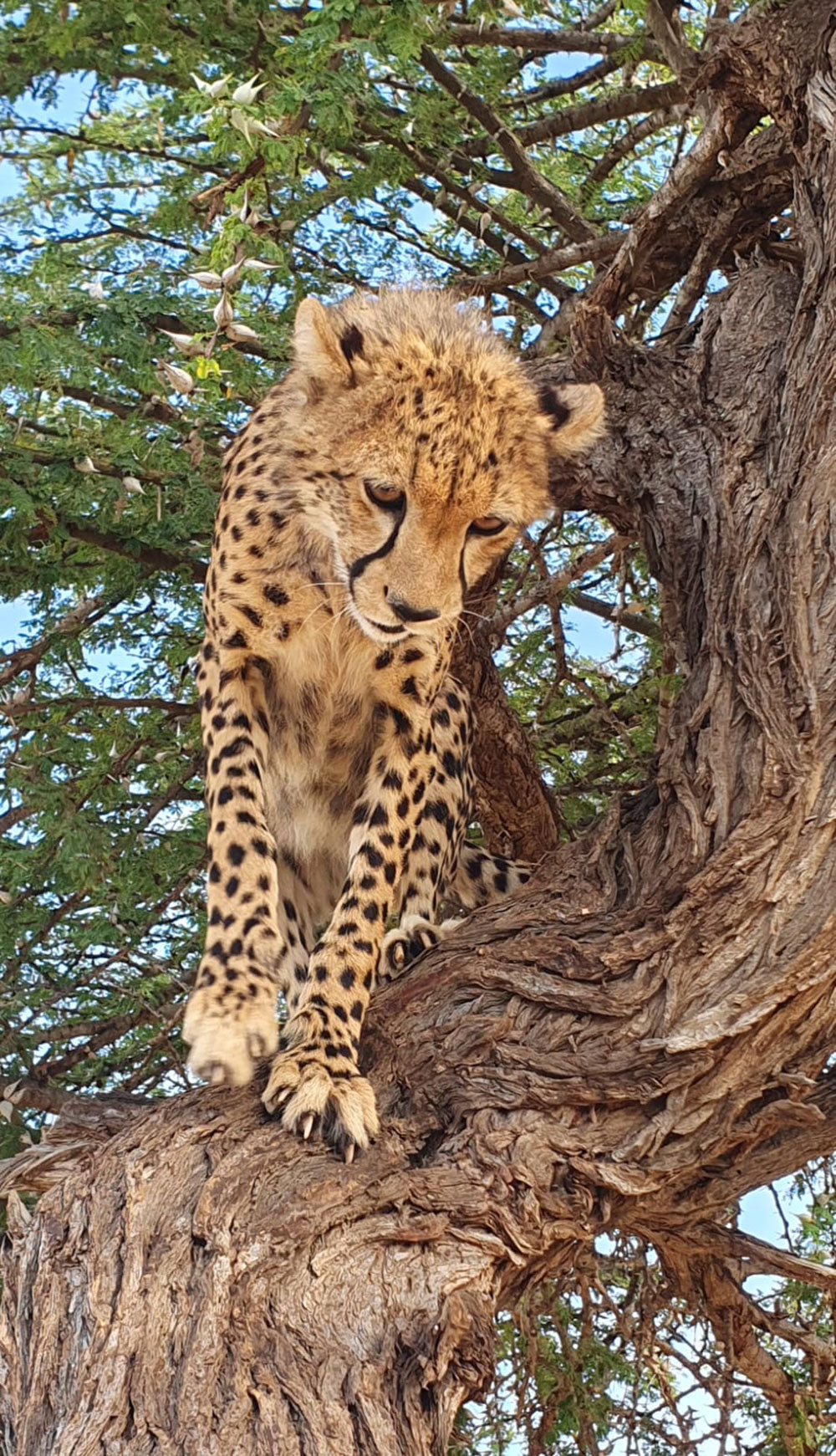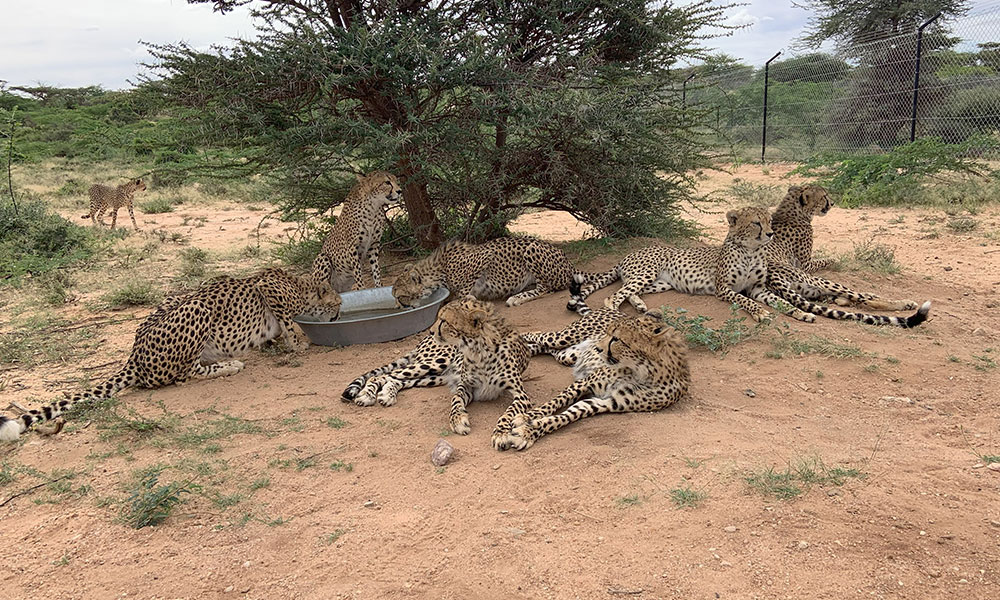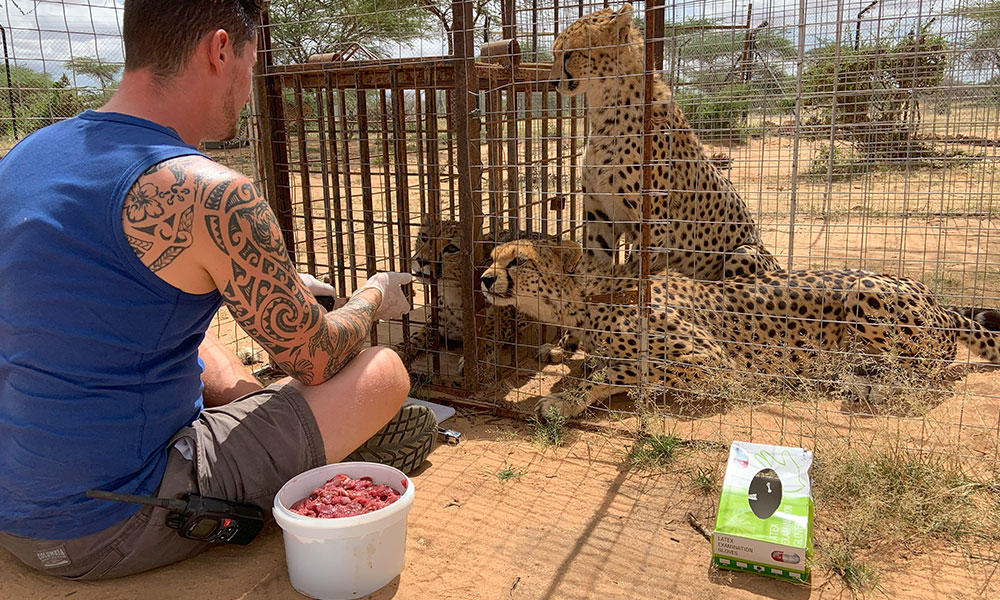Challenges, Struggles and “Wins” of Day-to-Day Conservation in Somaliland
-

- by Elaine Lyford-Nojima 2 February 2024

Upon my return from my first trip to Africa in 2016, during which I walked and camped in the bush for ten days, I knew I wanted to return to Africa—but in a way that would get me close to conservation. I wanted to see the nuts and bolts, the challenges and stressors, the struggles, and the “wins” of day-to-day conservation. When I learned that volunteers were welcome at the Cheetah Conservation and Rescue Centre in Geed Deeble in Somaliland, I immediately wanted to go. And in the month that I spent at the Centre, I got very close to conservation: from recording heart rate, pulse, and temperature every five minutes during a cheetah’s surgery, to inputting medical test results in the database, to cutting up goat meat for feeding cheetahs, to watching the staff medicate cheetahs, to living with frequent power outages, to hearing cheetahs purr and chirp just inches from me, to witnessing beautiful, healthy cheetahs running inside their spacious enclosures.

Among other tasks and experiences, I offered support and help to Natalie (“Nat”) and Tom, who are highly experienced, savvy, and observant staff who take care of the 80+ “bush” cats who are 1+ year old and who are relatively healthy. These cats live in large enclosures that have rocks, bushes, sand, and trees within their confines. Anywhere from 1 to 10 cheetahs will be in an enclosure, depending on how the cheetah gets along with other cheetahs, gets stressed by other cheetahs, etc. I accompanied Nat and Tom as they fed cheetahs, medicated cheetahs as needed, checked the enclosures to make sure they were secure, etc.


I was fascinated as Nat and Tom talked with me about how they monitor the cats’ health by looking closely at them every day as they fed them. They observed the gait of a cheetah as some of them have hip issues due to lack of nutrition as a cub: was the cat’s gait more pronounced today? They would monitor how well a cat ate—how enthusiastically and how much. They looked at the eyes of a cheetah; was that cat’s herpes acting up or did a spitting cobra spit some venom in a cat’s eyes? Since most of these cheetahs had been removed from their mother at a very young age, they never received training by Mom to avoid a cobra. How was a cheetah behaving—was the cat reclusive, quiet, responding to being called when Nat and Tom arrived with food? Their commitment and dedication to these cheetahs was reflected in how thoroughly they knew each cat’s personality and behaviors. Their powers of observation and memory were striking, particularly as they often were 10 feet from the cats, outside the enclosure as they studied and observed each cat. Remarkable!
Nat and Tom worked closely with Jamal, a local Somalilander who had been with CCF for some time. Though there was a significant language barrier, they worked extremely well as a team. They clearly respected each other, enjoyed each other, and enjoyed working together for the cheetah. While we may have seen a nature show which features a cheetah and her speed and grace of when she is running, it is a truly moving, profound, and emotional experience to witness, live, a cheetah run as she was meant to run.
